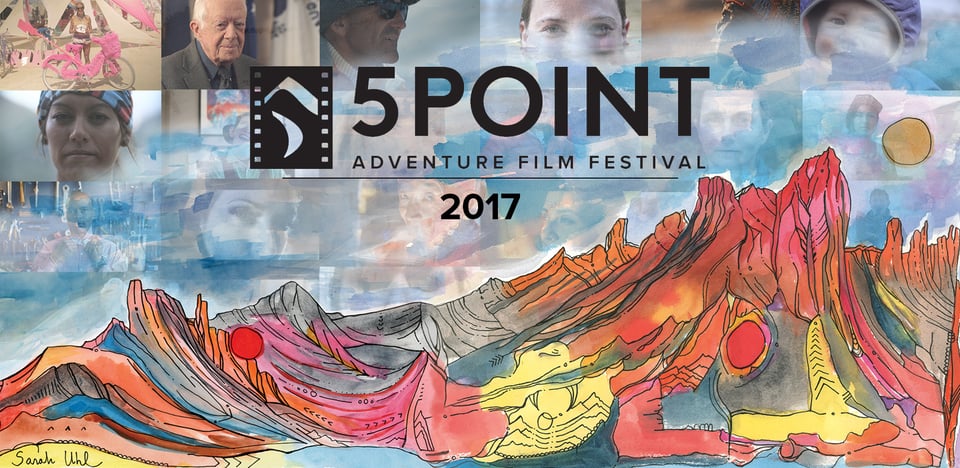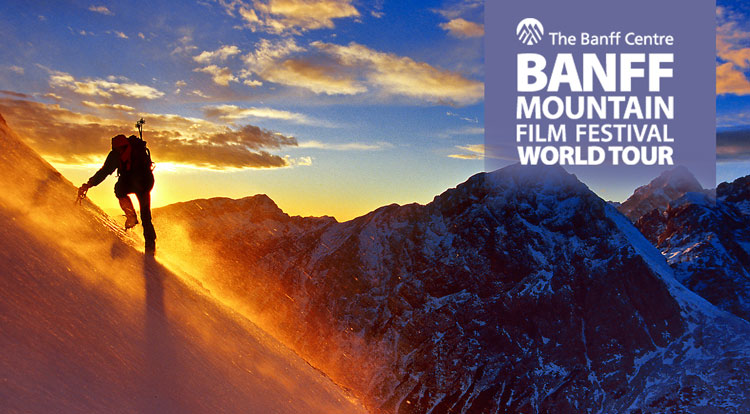
For many people, the phrase “film festival” summons images of celebrities basking in the silver screens at Cannes, Toronto, and Sundance. While it’s true that there’s a certain amount of prestige involved with showing at any of those events, the world is filled with incredible film festivals large and small – and the outdoor community is no different. Here’s a quick and dirty guide to navigating the wild world of adventure film festivals, from breaking down the actual submission process to targeting the right festivals for your film.
PROS AND CONS
Showing at film festivals is a fantastic way to share your work and promote a story you believe in (and spent a lot of time – and perhaps, money – telling). You have the opportunity to not only find an audience, but also receive recognition from peers and other industry folks, snag some press mentions, and possibly even make some networking connections that lead to financial assistance, future work, or expanded visibility for your project.
Of course, the process offers no guarantees – while your film’s acceptance might offer a sense of validation, rejection might conjure the opposite feelings – it’s important to prepare yourself emotionally for the process. Preparing your film on a deadline can be stressful, receiving feedback or criticism can be emotional, and the financial toll can take a chunk out of your overall film budget if you’re considering multiple submissions. It’s best to completely understand your own motivations for getting your project out there, so you’re better prepared to deal with the inevitable ups and downs as you go through the process.

SUBMISSION TIPS
There’s no exact science to getting your film accepted into a film festival, but here are some general tips to keep in mind as you’re preparing to send your hard work out into the world:
- Put your best film forward. Don’t rush just to make a submission deadline – it doesn’t help you or your film to deliver an unfinished product. Consider testing it with friends and family first, preferably in a live setting so you can watch for reactions and ask for feedback afterward. Double-check that DVDs play properly and that online viewing links are correct and that the quality is appropriate.
- Submit early. That said, as long as your film is ready to roll, it’s best to submit as early as you can in the process. This allows you to get in front of the selection committee as soon as possible, before they’re inundated, and also means you might earn a break on entrance fees, which are usually discounted for early birds.
- Target appropriate festivals. Be able to communicate not only what makes your film special, but also what makes it perfect for the festival you’re considering.
- Follow all submission requirements. Make sure you read every word, fill out every line of the application, and submit according to the requested specs. It might be helpful to create a spreadsheet or similar to help track your progress through the process, especially if you’re contemplating multiple submissions.
- Share your platform. Give your film a leg up in the submission process by reaching out to festival teams and introducing your project (although, be careful not to pester them – a one-time introduction should be good unless they continue the conversation). When you do so, have your elevator pitch ready, and be sure to share whether you already have a built-in audience, or “platform,” whether through the film’s subject itself, an engaged social media following, a brand sponshorship, or even a successful crowdfunding campaign.
- Budget appropriately. Instead of scrambling to cover entrance fees, consider these in your upfront film budget. You might also want to set aside an amount to cover what you’d need to actually attend the festivals and create promotional materials (posters, postcards, etc.) that may be required for accepted films.

CHOOSING A FESTIVAL
Your film is finished and you’re stoked to finally get your work out there, so now it’s time to research festivals, figure out which ones you’d like to target, and start submitting! While some adventure film festivals have a fairly wide scope as far as content and topics, some are a bit more specialized. To help you drill down, here’s the scoop on a few of our favorites:
5Point Film Festival: This festival has been lighting up screens in Carbondale, Colorado for a decade, covering a wide mixture of adventurous pursuits from surfing to skiing, with an overall vibe of “respect, commitment, humility, purpose and balance.” The weekend-long event is a community-oriented celebration of art, both onscreen and off, with gallery exhibits, speakers, and social gatherings.
Adventure Film Festival: The Boulder, Colorado-based Adventure Film Festival is an annual showcase of the many facets of “adventure,” from inspirational mountain epics to explorations of environmental issues to documentaries about outdoor activism. The main event is a community gathering complete with street festival, but selected films end up traveling the world over.
Banff Mountain Film + Book Festival: Canada’s Banff Centre for Arts and Creativity has hosted this legacy event for over 40 years. Along with its literature component, the film competition is pretty impressive, showcasing some of the world’s best adventure films focused on – you guessed it – mountain sports, culture, and environment. Networking opportunities are legendary at the week-long event, which also offers workshops and the possibility of being selected for a worldwide screening tour.
Mountainfilm: This prestigious event, held in Telluride, Colorado, runs the gamut from shorts to feature-length documentaries, covering the spectrum of the outdoor experience. Like Banff, it’s been around for decades, and it’s considered one of the best places to showcase for adventure filmmakers. It also offers a complete festival atmosphere, with visual art, esteemed speakers, and live music, and of course, plenty of parties.
Wild & Scenic Film Festival: This Nevada City, California festival is focused specifically on inspiring audiences through films that explore all aspects of social and environmental activism. You’ll still find plenty of adrenaline here, but it’s rooted in a sense of responsibility and a call to action.
Header image by Samuel Ferrara on Unsplash
